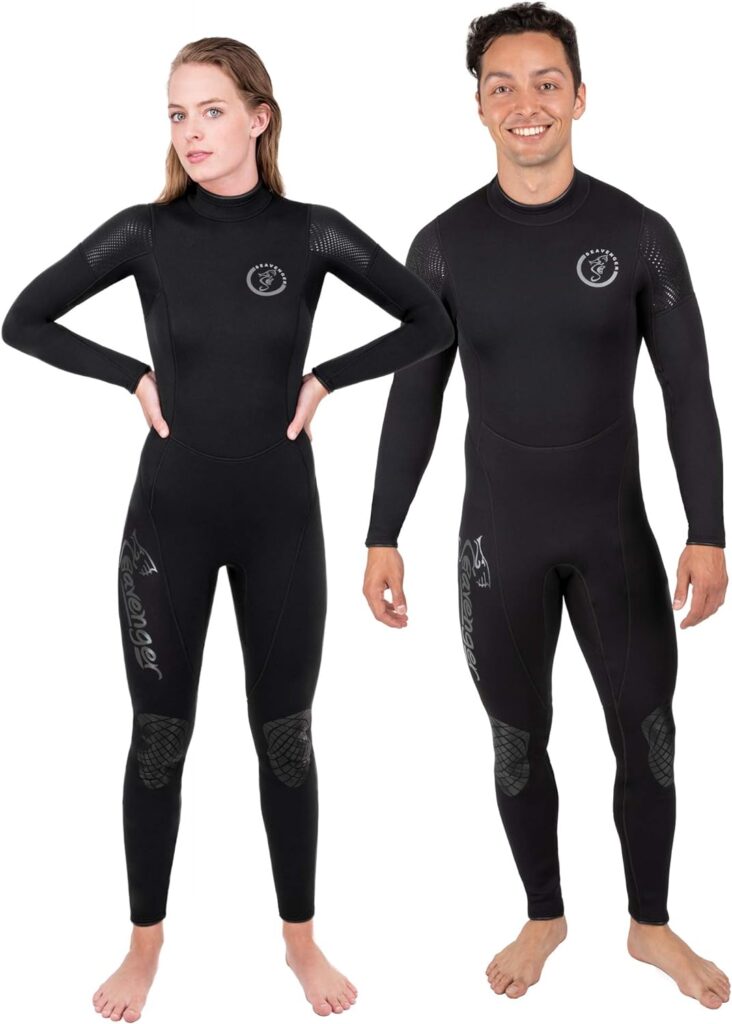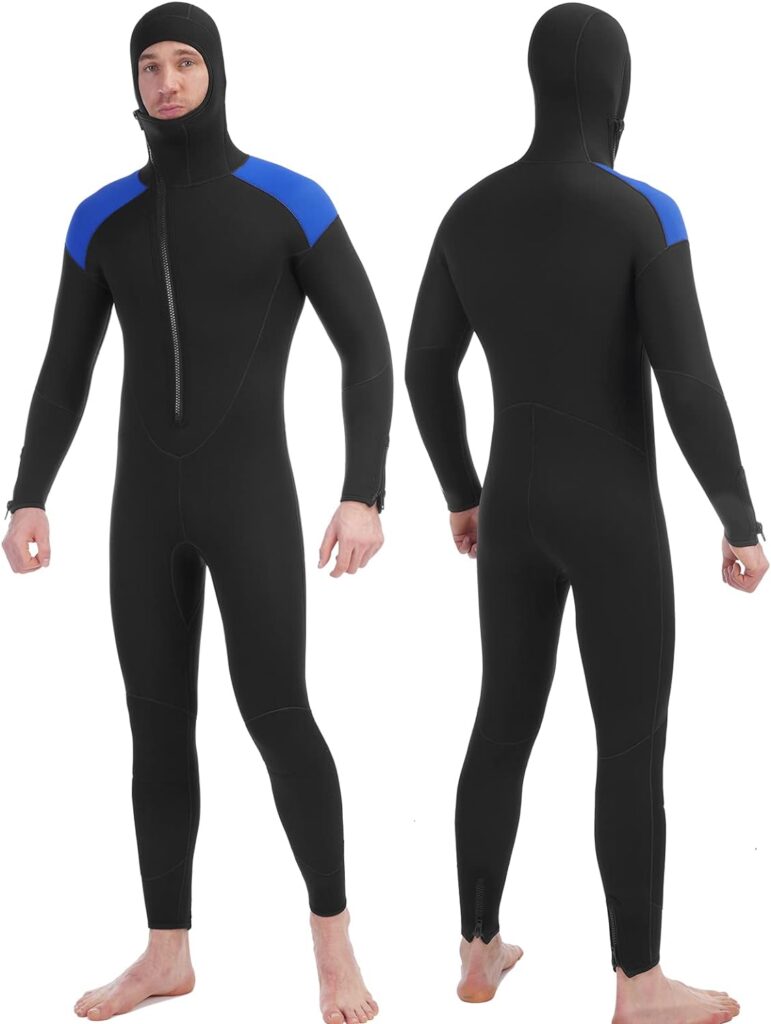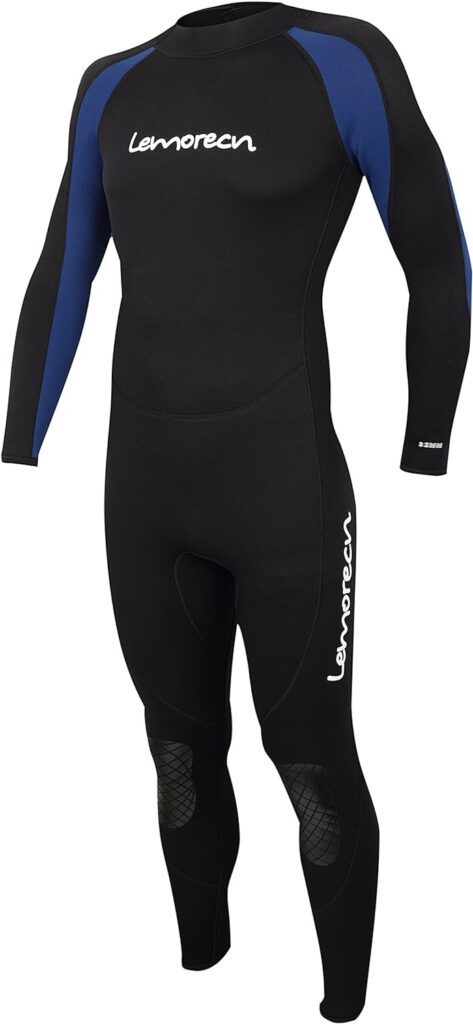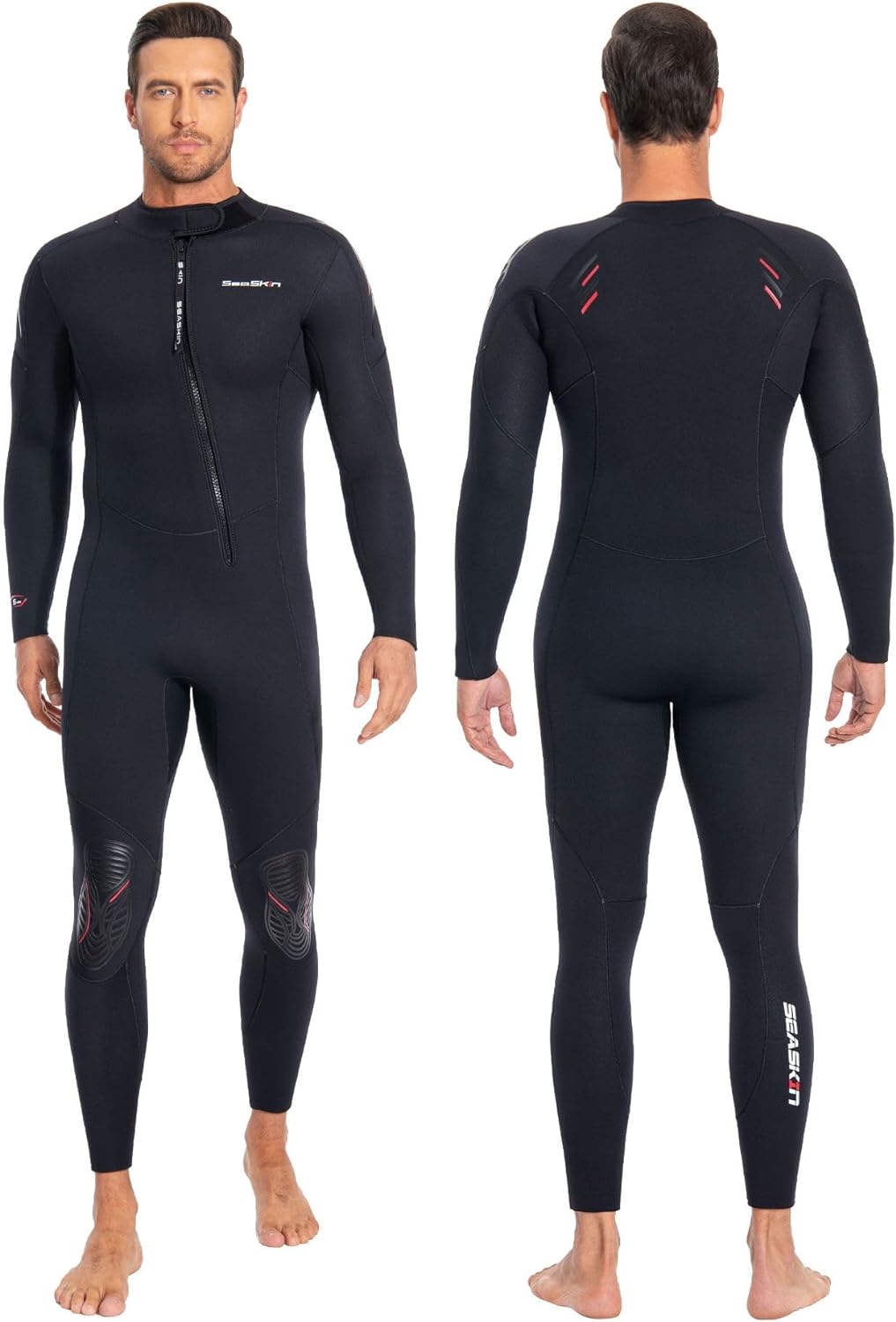What Are Wetsuits – Your Complete Guide To Wetsuits!
You don’t need to be told that water sports are fun because we all love to get involved in them in one way or the other. However, wetsuits are one of the main gears needed for water sports which brings us to “what are wetsuits or what is a wet suit?”
Even if you have never tried any water sports in the past, you must have seen people getting involved in water sports physically or on TV. Of course, we all admire the fun water activities bring. You need a wetsuit if you want to try out water sports involving swimming or exploring underwater.
Unfortunately, not many people know the importance of wet suits. Even not all water sports enthusiasts do. Today, you will learn what are wetsuits, their functions, how to choose the best one for your adventure, the different types of wet suits and more. Sit back and learn!
What Are Wetsuits
Wetsuits are garments specially designed to provide thermal protection when you are swimming or involved in any water activity requiring water immersion. When in cold water, wetsuits provide you with warmth so that you don’t get cold as you explore the water for hours.
The best wetsuits are usually made of neoprene and are worn by triathlons, divers, surfers, canoeists, windsurfers and those who engage in water activities.
How Does A Wetsuit Work?
A wetsuit like the name suggests doesn’t keep you dry. Instead, it works on a clever principle of trapping a thin layer of water next to your skin.
The thin layer of water trapped next to your skin acts like a buffer zone. Once you enter the water, the wetsuit lets a small amount of water sip in, but because wetsuits are usually fitted snuggly, they don’t allow a continuous exchange of water.
Here is what happens when you wear a wetsuit: your body heat rapidly warms the trapped layer of water to balance with your body temperature.
Since wetsuits are made of neoprene, a special type of foam with thousands of tiny air bubbles trapped within, the air bubbles act as heat insulators that prevent a warm water layer between the wetsuit and your skin from losing heat to the colder surrounding water.
The trapped warm water layer keeps you comfortable in the water and prevents immersion hypothermia, a dangerous condition that results from the temperature of your body dropping too low.
Depending on water conditions, wetsuit thickness matters. Thicker wetsuits (measured in millimeters) are the best for colder water because they offer more insulation. On the other hand, thinner wet suits are better in warmer water, providing you with more flexibility for activities such as surfing.
RELATED: Do You Need a Wetsuit to Surf? Uncover the Truth Now!
The Best Wetsuits
If you are looking for the best wetsuits, here are the carefully selected ones. They come in different types, quality and budget. You can choose based on your preference and body type.
What Are The Benefits Of Wetsuits
Wetsuits are important gear with many benefits for anyone who engages in water activities such as surfing, diving, triathlon and swimming. Here are some of the benefits of wetsuits:
1. Thermal Insulation/ Warmth
I can’t mention enough that wetsuits are designed to keep your body warm in cold water. When you wear it, it traps a thin layer of water between your skin and the neoprene suit.
Your body heat warms the trapped water, which then acts as an insulator, keeping your body warm and preventing hypothermia.
2. Buoyancy
Wetsuits offer you buoyancy, which is especially helpful for anyone who is not a strong swimmer. The neoprene material used to make wetsuits is buoyant, which helps you stay afloat.
It also helps you to reduce the effort needed to swim and stay afloat. This feature is essential for water activities such as diving, surfing and open-water swimming, where you need to stay afloat.
3. Protection From Elements
Outdoor activities are fun but elements such as the sun can cause some damage especially if you are not using sunscreen properly. Wetsuits protect you from the sun’s harmful UV rays, stings, cuts and abrasion. This is especially important for you if you spend a lot of time in the water.
4. Increased Comfort
A wetsuit can enhance your comfort in water while reducing cold sensation, chafing and water friction against your skin. They are designed to fit snugly against the body to provide you with increased comfort and flexibility. This allows for greater freedom of movement in the water.
5. Improved Performance
If you want to improve your performance in water, you need a wetsuit. Wetsuits help improve performance by reducing drag in the water. The smooth surface of the neoprene material helps you to move more efficiently through the water.
With it, you can push your limits, exploring new depths, distances and waves confidently.
6. Flexibility And Range Of Motion
The best and latest wetsuit designs offer a balance between flexibility and insulation, letting you enjoy a full range of motion without movement restriction. The stretchy neoprene material conforms to your body contours, allowing you to perform dynamic movements effortlessly, whether swimming, surfing, diving or paddling.
7. Versatility
Wet suits are versatile and perfect for a wide range of water activities and environments. They are available on the market in different styles, designs and thicknesses, tailored to specific purposes including triathlon, kayaking, paddleboarding, snorkeling, diving and surfing.
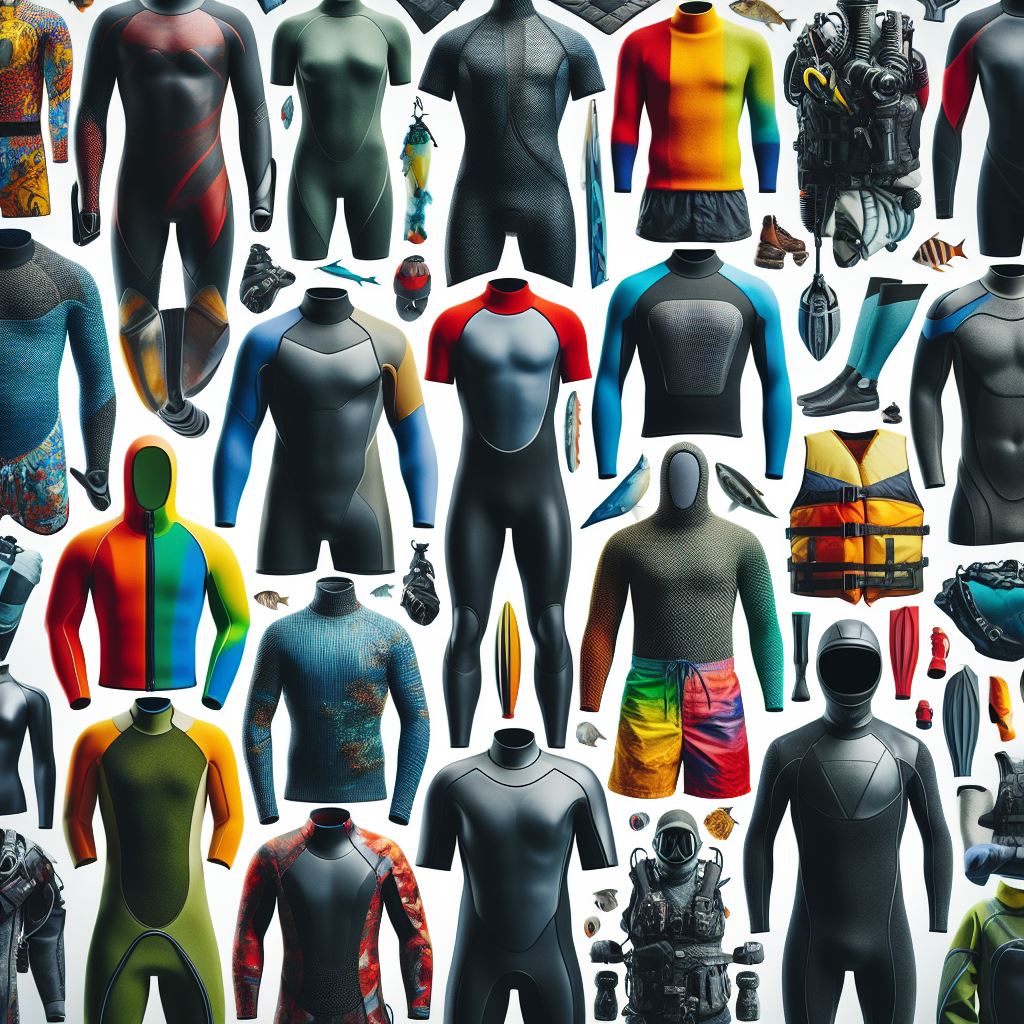
The Different Types Of Wetsuits And Their Features
Depending on your water activity, there are different types of wetsuits. Here are some of them and their features:
| Wetsuit Type | Description | Ideal For | Features |
| Fullsuit | Covers the entire body from head to toe | Coldest water temperatures | Maximum warmth, full body protection |
| Hooded Fullsuit | Fullsuit with attached hood for extra warmth | Coldest water temperatures, additional head protection | Maximum warmth, full body and head protection |
| Short John/Jane Wetsuit | Covers torso and upper legs | Warmer water temperatures, activities requiring flexibility | More flexibility for paddling, surfing |
| Long John/Jane Wetsuit | Covers legs and core body (no sleeves) | Moderate water temperatures | Core warmth and leg protection, good for activities like kayaking |
| Spring Suit | Covers core body with short sleeves and legs | Moderate water temperatures | The balance between warmth and flexibility for activities like kayaking |
| Short Arm Steamer Wetsuit | Sleeveless wetsuit with legs, typically thinner | Warmer water temperatures, sun protection | Core warmth, leg protection, sun protection |
| Wetsuit Vest | Covers torso only | Warmest water temperatures, minimal warmth needed | Upper body warmth allows for maximum arm mobility |
| Wetsuit Jacket | Covers the torso and arms, similar to a short sleeve spring suit | Warmer water temperatures, additional upper body warmth | Upper body warmth and sun protection |
| Rashguard | Tight-fitting, thin top made of lycra or similar material | Sun protection, minor abrasion protection | Protects against sunburns, minor rashes, and abrasions. Perfect for layering under your wetsuit. |
| Streamer | Lightweight neoprene top with short sleeves and torso coverage | Warmest water temperatures, minimal warmth needed | Sun protection, minimal warmth |
| Dry Suit | Completely waterproof suit with airtight closures | Coldest water temperatures, activities requiring complete dryness | Maximum warmth and dryness, ideal for diving or cold water activities |
| Zipper | Closure mechanism on a wetsuit | Varies depending on the type | Allows for easy on and off, placement can affect comfort and flexibility (e.g., back zip, chest zip) |
How To Choose The Right Wetsuit For Your Needs
Choosing the right wetsuit for you may be daunting because there are different types of them. When you are choosing the best wetsuit, here is what you should consider:
1. Water Temperature
Water temperature is a critical factor when choosing a wet suit. Wetsuits come in different thicknesses and styles, each made for certain water conditions. This is how it works:
| Water Activity | Suitable Wetsuit Type | Thickness (Neoprene) | Water Temperature Range | Additional Considerations |
| Surfing | Full Wetsuit | 3-5mm (cold water), 2-3mm (warm water) | Cold: Below 18°C (64°F) | Opt for a full wetsuit with long sleeves and legs for comprehensive coverage and insulation. You may want to choose thicker neoprene for colder water conditions and thinner neoprene for warmer water. |
| Diving | Full Wetsuit | 5-7mm (cold water), 3-5mm (temperate water) | Cold: Below 18°C (64°F) | A full wetsuit with thicker neoprene is perfect for cold water diving to provide sufficient insulation against low temperatures. It makes sense to consider features like reinforced knees and chest pads for additional durability and protection. |
| Snorkeling | Shorty Wetsuit or Rashguard | 2-3mm (optional) | Warm: 25-30°C (77-86°F) | Choose a shorty wetsuit or rashguard depending on your preference and water temperature. A lightweight neoprene or rashguard with UPF sun protection will provide you with comfort and sunburn prevention in tropical climates. |
| Paddleboarding | Spring Suit or Wetsuit Vest | 2-3mm (optional) | Moderate: 18-25°C (64-77°F) | Consider a spring suit or wetsuit vest for core warmth without restricting your arm movement. Look for breathable materials and flexible designs to enhance mobility and comfort while paddling. |
| Kayaking | Long John/Jane Wetsuit or Dry Suit | 3-5mm (optional) | Cold: Below 18°C (64°F) | Long John/jane wetsuits offer core warmth and flexibility for paddling in moderate water temperatures. Dry suits provide complete waterproof protection for kayaking in cold water conditions. |
| Triathlon | Sleeveless Wetsuit or Full Wetsuit | 3-5mm (optional) | Moderate: 18-25°C (64-77°F) | Sleeveless wetsuits provide unrestricted arm movement for swimming, while full wetsuits offer additional insulation. For this, you will love a wetsuit with a snug fit and hydrodynamic design for optimal performance in the water. |
| Sailing | Long John/Jane Wetsuit or Dry Suit | 3-5mm (optional) | Cold: Below 18°C (64°F) | Long John/jane wetsuits offer you core warmth and freedom of movement for sailing in moderate temperatures. Dry suits are also great as they provide waterproof protection against cold water and wind. Ideal for sailing in harsh conditions. |
| Wakeboarding | Shorty Wetsuit or Wetsuit Jacket | 2-3mm (optional) | Moderate: 18-25°C (64-77°F) | Opt for a shorty wetsuit or wetsuit jacket for flexibility and mobility while wakeboarding. Consider features like reinforced seams and abrasion-resistant materials for durability and protection against impact. |
| Swimming | Streamlined Wetsuit | 1-3mm (optional) | Warm: 25-30°C (77-86°F) | Choose a streamlined wetsuit with minimal thickness for buoyancy and hydrodynamics. Look for flexible neoprene with a snug fit to minimize drag and maximize speed in competitive swimming events. |
2. Type Of Activity
When choosing a wetsuit, consider the type of water sport or activity you will be involved in. Activities like surfing or kayaking require more flexibility, so a thinner, more flexible wetsuit might be better. Equally, for activities with minimal movement like scuba diving, warmth becomes a priority, and a thicker suit might be ideal.
3. Fit And Comfort
Wetsuits should fit snugly but not restrictive. There should be no gap between your skin and your wetsuit. If there is a gap between your skin and the wetsuit, water will be flushing in and the insulation will decrease. Pay attention to the wrist, neck and ankles when choosing a wetsuit to prevent water entry.
4. Mobility And Flexibility
What is the essence of a wet suit that restricts your movement? Wetsuits should be stretchy to enhance your movement. Flexibility is important in a wet suit especially if you will be performing dynamic movements such as paddling, diving and swimming.
5. Durability And Quality
While wetsuits come in different types and budgets, selecting a quality one will help you to prevent unnecessary spending. If you are always involved in water activities, you should consider the quality of your wet suit. So, choose wetsuits from reputable brands popular for providing top-quality suits for cold water.
6. Design
The design of the suit is also important. You may want to consider a design that will enhance your comfort and performance depending on your activities.
Consider additional features like zippers (back zip vs. chest zip for comfort), seams (flatlock seams for minimal water entry), kneepads (for abrasion protection), thermal lining (for better warmth in cold water) and hoods (for extra warmth).
7. Personal Preference
We are different in many aspects. If you get cold easily, you want to opt for a thicker suit even in warm water. On the other hand, if you get warm easily, a thinner suit might just be the right one for you. So, choose based on your type of body.
8. Budget
Of course, you want to consider your pocket and preference. Though top-quality suits are the best, you may want to choose based on your budget. Sometimes, cheaper wetsuits also offer amazing quality and durability but you need an extra eye to pick the right one.
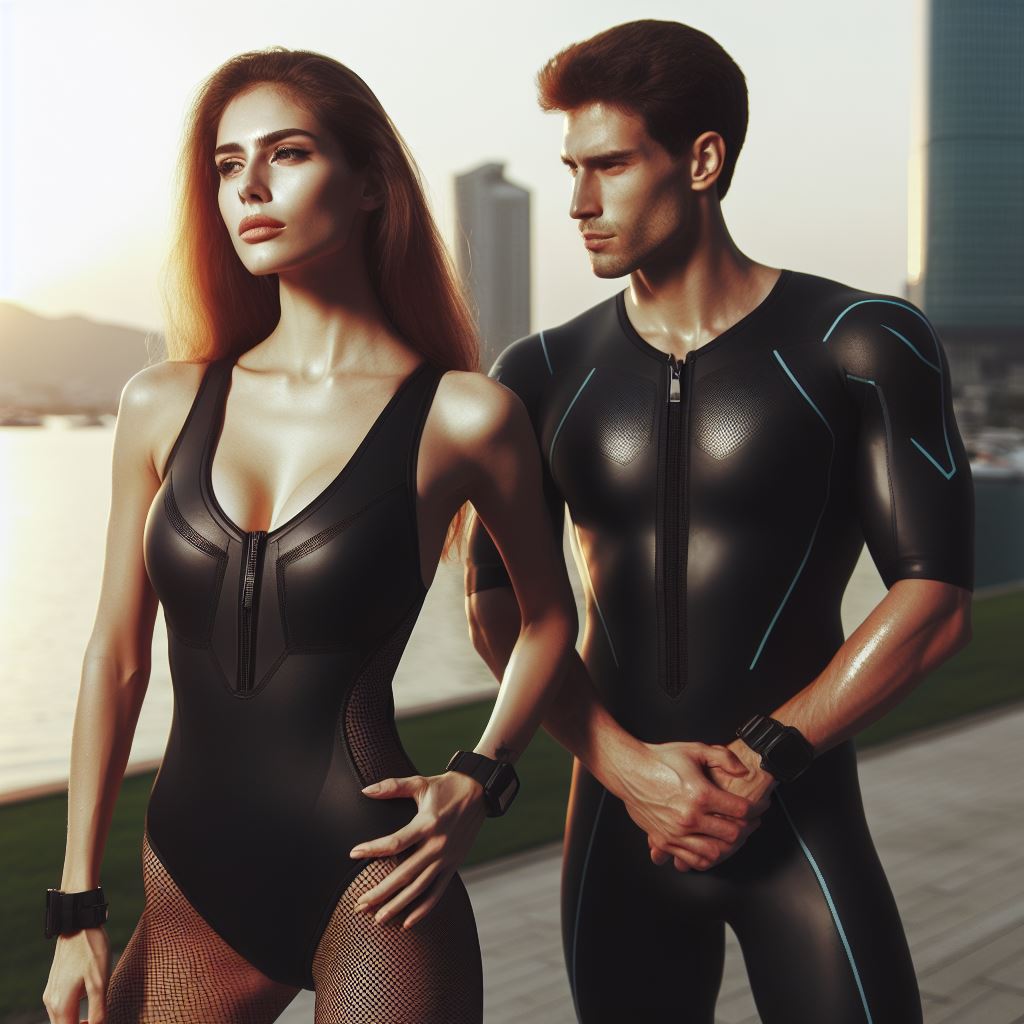
Proper Care And Maintenance Of Wetsuits
Whatever you don’t care for will not last. The same thing applies to your wetsuit. If you fail to care for it, it will not last and that can mean extra money. So, here are the best ways to care for your wetsuit:
1. Rinse Wetsuits After Every Use
This is a golden rule that you must follow. Whether it is salt water, chlorinated pool or sweat, you need to rinse your wetsuit after every use to prevent any damage to the material.
This will also prevent unpleasant odors. Rinse your wetsuit with clean fresh water. A hose, shower or a dip in a freshwater stream or lake should do the work for you.
2. Wash Occasionally
While it is good to rinse your wet suit after every use, washing it thoroughly occasionally is also important. You want to give it a deeper wash after a few uses. Wetsuit shampoo designed for neoprene should be enough to clean it. Avoid using harsh detergents to prevent the suit from damage.
While washing, turn it inside out and wash gently. Pay attention to areas where dirt and sweat can be easily trapped. The groin area and armpits are areas to pay attention to.
3. Air Dy, Not Sun Dry
Drying your wet suit under direct sunlight may damage it quickly. Air drying is the best. Hand it and let it dry in a well-ventilated area and if you want to speed up the drying time, you can use a fan to increase the airflow to the suit. Make sure to turn it inside out when drying.
Do not hang it from the shoulder or neck to prevent it from stretching unnecessarily. A wide wetsuit hanger is the best hanger to support the suit’s weight. Let it dry completely to avoid odor. Avoid drying it on sharp or rough surfaces that could damage or stretch it.
4. Store Properly
After your suit dries completely, you want to store it in a cool, dry place where heat cannot damage it. Do not fold it because sharp creases can impact the neoprene material over time. Hanging it loosely on a wide hanger or lying it flat is the best way to store it.
5. Care For The Zips
The zipper is an important part of your wetsuit. After rinsing the suit, gently pull the zipper down the entire length of the suit to remove trapped debris or sand. You can apply a silicone-based lubricant designed for zippers to maintain the smoothness of the zipper.
6. Avoid Folding Or Wringing
Do not fold or wring the wetsuit as this can cause it to crease, weaken the neoprene and eventually affect its flexibility. Instead, gently squeeze out excess water and let the wetsuit air dry naturally.
7. Handle With Care
Always handle your wetsuit with care and prevent any contact with sharp objects, abrasive materials or rough surfaces that could puncture or tear it. If you wear jewelry, be mindful of it and your fingernails to prevent them from damaging your suit.
8. Inspect Regularly, Patch Tears And Holes Promptly
Inspect your wet suit regularly to see if there are any holes or punctures. Once you find one, try to patch it immediately so that it doesn’t become a bigger one that will cause water to sip in when you are in the water. Use neoprene cement or patches made for wetsuit repair. Follow the manufacturer’s instructions.
9. Rotate Usage
If you are a water enthusiast who is always in or on water, you want to buy more than one wetsuit to rotate and avoid using one every time. This will let each suit dry properly and prevent moisture buildup. It will also reduce the risk of mold and mildew growth that result from using a suit that is not properly dried.
Rotating your wetsuits can also prolong the lifespan and prevent unnecessary spending.
Common Mistakes To Avoid When Wearing A Wetsuit
Wetsuits are important for comfort, safety and performance when it comes to water activities. However, there are mistakes to avoid to prevent damaging your wet suit: Here are some of them:
1. Choosing The Wrong Size
Usually, wetsuits are snug fit but our shapes are not the same. You should choose your suit based on your shape. If your suit is restrictive or causes you discomfort, then you should return it for a fitter one. Also, the suit should not be too loose, else it will not be comfortable.
2. Forcing A Wetsuit On Dry
It is not proper to force a wet suit on a dry body because you can damage it in the process. To make it easier for you to put it on, put on a damp swimming suit under it or wet the inside of the wetsuit slightly to make your entry smoother.
3. Ignoring Zipper Placement
Zippers are located in different parts of the wetsuit such as the back zip or chest zip. Chest zips are easier to manage than back zips and may require another person’s help when you want to get in and out of the suit. So, consider your preferences and activities before choosing your suit.
4. Neglecting Seams
Manufacturers usually use flatlock seams in wetsuits to minimize water entry but some wet suits still use stitched seams that can allow more water in. If your suit comes with stitched seams that are not glued, you may want to apply seam sealant made for wetsuits to reduce water infiltration through the seams.
5. Not Securing Zipper Properly
Failure to secure the zipper properly can cause water leakage and insulation reduction. Make sure to fully close your zipper to prevent water from seeping in.
6. Wearing Wrong Layers
Wearing the wrong layer underneath the wetsuit can affect the insulation capacity. Avoid wearing thick or cotton clothing that absorbs water as it can make you feel colder. Choose moisture-wicking base layers made of synthetic materials to help you regulate body temperature and keep you warm.
7. Ignoring Signs Of Wear And Tears
If you see any sign of wear and tear, you should take care of it immediately. Never ignore loose seams, punctures and tears. Make sure to stitch any wear and tear immediately you spot on to prevent any major damage to the wetsuit.
8. Not Allowing It To Dry Properly
One of the ways to quickly damage your wet suit is not allowing it to dry properly or drying it under direct sunlight. This is why it is important to have at least two wetsuits if you carry out water activities regularly. So, always allow your wetsuit to air dry properly before using it to avoid bad odor or damage.
9. Failing To Rinse And Dry After Use
Even if you are not washing your wetsuit after every use, you must rinse it after each use. Leaving salt or chlorinated water on it can damage it quickly. Also, it can become smelly if you fail to rinse and dry it after every use.
10. Overlooking Neck And Wrist Seals
Failure to properly adjust neck and wrist seals can cause water to flush into the wetsuit, thereby reducing its efficiency. It is necessary to ensure the suit’s seals are snug but not too tight to prevent water entry while maintaining mobility and comfort.
The Bottom Line On What Are Wetsuit
So, what are wetsuits? Wetsuits are like personal underwater heaters, designed to keep you warm and comfortable in chilly waters. They work by trapping a thin layer of water next to your skin, which your body heat warms up.
From surfing and diving to kayaking and swimming, wetsuits are essential gear for anyone who wants to extend their playtime in the water. Choosing the right wetsuit and following proper care practices can help you experience the joy of aquatic adventures without sacrificing warmth and comfort.
